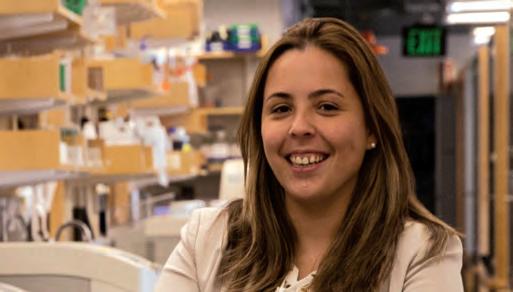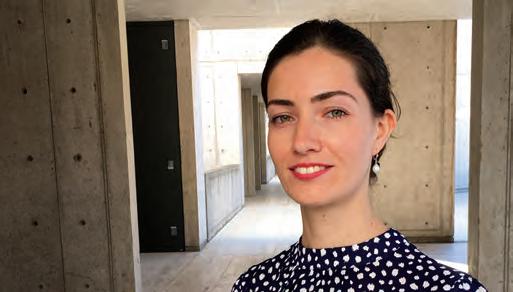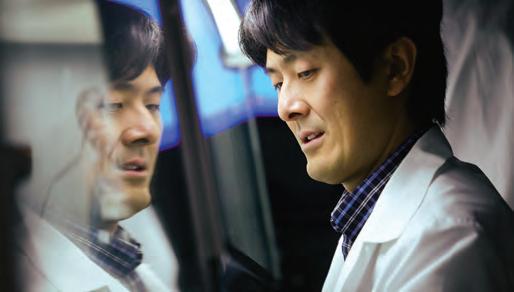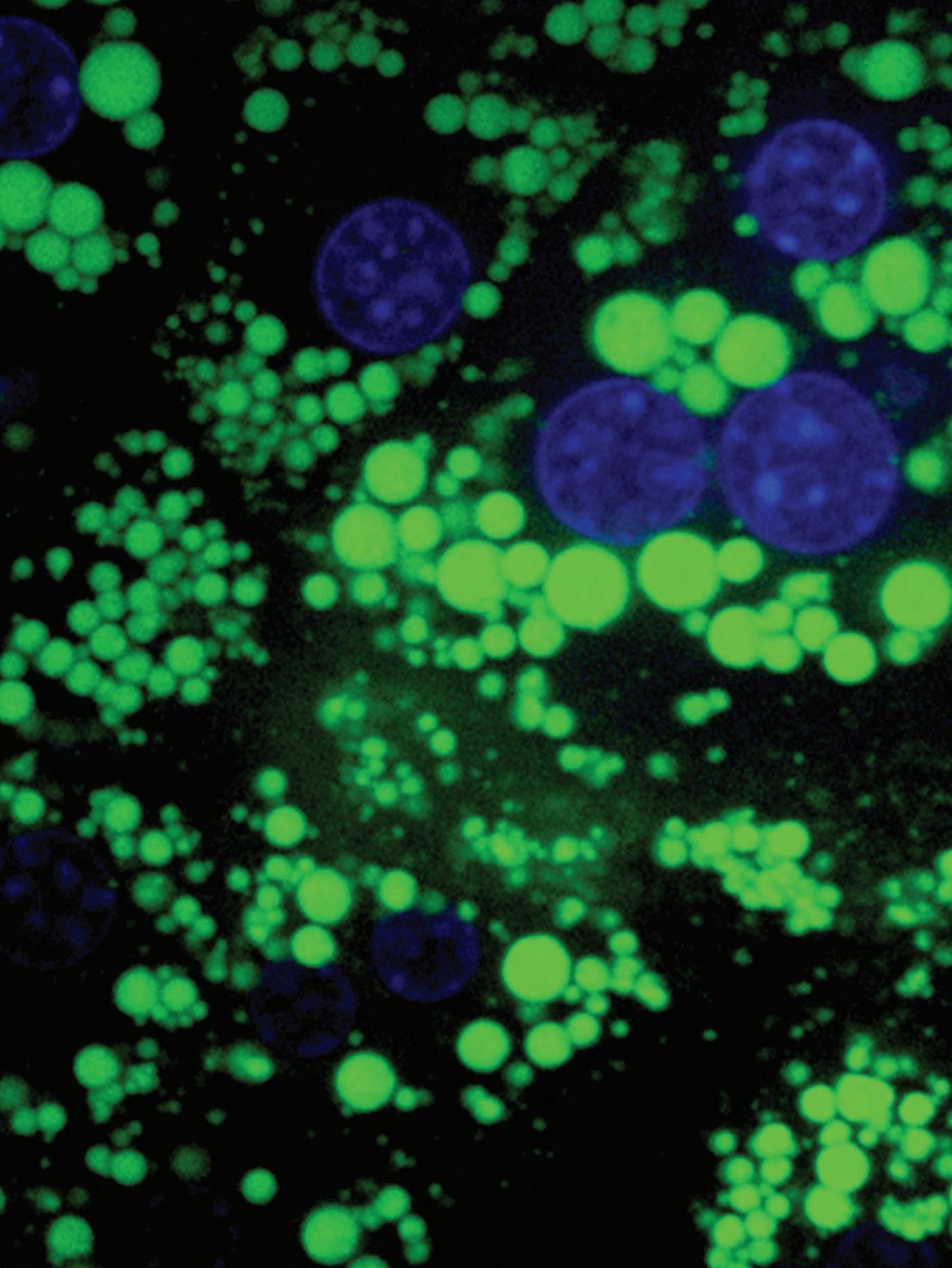
9 minute read
The Next Generation of Scientists
Ana Paula Arruda, PhD

Advertisement
Q. What drew you to the Sabri Ülker Center?
I decided to apply to the Center early on: when I was just in my second year of the PhD program in Brazil, and preparing to defend my qualifying exam. In my PhD program, the qualifying exam consisted of the student presenting a seminar about a subject different from the main topic of their PhD thesis. My main topic was calcium metabolism in muscle, but I had always enjoyed reading about the field of obesity and diabetes, and when I read some articles by Dr. Hotamışlıgil, I became fascinated by the field of immunometabolism. In my mind it was very intriguing that the immune system shared so many commonalities with metabolic pathways. I also recognized from Dr. Hotamışlıgil’s papers a very unique and creative thinking process. This seemed like the perfect setting for my post-doctoral training, so I decided to apply to this lab. It was just a dream in the beginning but it turned into reality.
In the past few years it has become clear that dysfunction of cellular organelles such as mitochondria and endoplasmic reticulum (ER) in metabolic tissues plays an important role in the pathogenesis of obesity and diabetes. I am particularly interested in studying how overnutrition impacts the architecture of these organelles and how this influences their activity. In addition, I am studying how the stress in one organelle affects the other. We recently discovered that the structure of ER and mitochondria are changed in the liver of obese mice, and that the physical association between these two organelles is more pronounced in this condition. One of the consequences of altered ER-mitochondria association is excessive transport of calcium from ER to mitochondria, which negatively influences mitochondrial metabolism. Now we are studying the physical association between ER and plasma membrane, and how this responds to nutritional changes and might influence ER function and dysfunction in obesity.
Q. What do you hope will emerge from your project?
of this for the function of these organelles and for calcium homeostasis in the cell. Ultimately, I hope to find specific molecular targets that will allow us to correct these alterations and treat metabolic disease.
Q. What is most challenging about your work?
I think about this in two ways. Broadly, I think it is extremely challenging to study metabolic disease, because of the remarkable complexity of the systems and pathways involved. There are so many intertwined molecular pathways, all of which have diverse consequences for cellular homeostasis, that when we try to study the effect of a single molecule in isolation, interpreting the results and understanding the context can be very difficult. I think that to really produce effective advances in this area, we need to develop new approaches that can take into account this complexity. For my specific project, we are trying to study structural alterations in organelle structure, and although we have very good techniques such as electron and fluorescent microscopy, the precise quantification of these alterations is very challenging. We are now developing an array of new reporters and imaging systems to overcome this limitation.
Q. What surprised you when you joined the Center?
When I joined, I found a big lab, well equipped, organized and full of very intelligent people. I was pleased by that, but in a way it was what I expected given their published work and reputation. My real surprise was to see the degree of intellectual freedom that Gökhan gives to his fellows and students and also the collaborative environment of the Center. Both of these were good surprises!
Q. Where do you see yourself in five years?
My dream is to have my own lab, leading a small group of scientists pursuing the research questions that interest me most. I also see myself teaching, which I love to do! If I establish my lab outside Brazil, my home country, I also hope that I can have some sort of collaborative program with Brazil, because it’s part of my dream to contribute to the development of science in my country.

Meric Erikci Ertunc, PhD
After finishing my undergraduate studies at Bilkent University in Turkey, I became interested in metabolic disease research that has translational potential. In thinking about metabolism, it is important to see the bigger picture of biological systems – one must start from molecular events inside the cell in order to eventually understand the effects in distant organs and the broader mechanisms underlying pathology. The Sabri Ülker Center has the ideal environment to study such complex mechanisms due to Gökhan’s visionary mentorship, the intellectual culture, and the diverse collection of outstanding scientists who are experts in different aspects of the metabolic system.
Q. What surprised you when you joined the Center?
I was very impressed by the weekly lab meetings. Every week, one or two people present their findings, and all members of the lab are engaged in the discussion, challenging ideas and thinking through potential problems. These discussions can take several hours and can be very demanding. It was amazing to be involved in this intellectual synergy, and to watch new ideas emerge from these meetings and discussions.
Q. Where are you now?
After completing my PhD training at the Center, I became a Postdoctoral Research Associate at the Salk Institute for Biological Studies. I am now carrying my interest in metabolism into new directions.
People often think of fat as a harmful nutrient that needs to be avoided. This is actually not completely true, and several labs, including the Sabri Ülker Center, have demonstrated that there exist specific lipids that have the potential to improve metabolic function and prevent harmful effects of stress and chronic inflammation in obesity and diabetes. My current project focuses on studying how these molecules exert their beneficial effects and how they are regulated under physiological and pathophysiological conditions. A better understanding of these aspects has the potential to identify novel therapeutic targets for metabolic diseases such as diabetes and cardiovascular disease, as well as other immune-related pathologies such as multiple sclerosis.
Q. What is most challenging about your work?
I have had to learn totally new techniques rapidly, from biochemical approaches to disease models, to properly understand the structure of lipids and to study their actions. One of the new approaches I’m learning is mass spectrometry, a type of analysis that allows a researcher to get a global picture of the molecules present in a sample from an animal, such as the nutrients and their derivatives. This area and the surrounding technologies were brand new to me, and I have had to learn everything starting from how to prepare the samples to the interpretation of the results, which consists of thousands of numbers, graphs, and calculations.
I came to Sabri Ülker Center with great enthusiasm for science but limited experience related to experimental approaches and identifying critical questions. Simply put, the Center built me into an independent scientist. I learned to ask interesting scientific questions, design experiments that would answer those questions, and interpret them with a broad and objective vision. I don’t hesitate to ask challenging questions and try to figure out ways to solve them, however difficult they may be. This was the collective outcome of working in a vigorous intellectual environment with outstanding colleagues and the mentorship that Gökhan himself provided.
My best memories are of when we had lab-wide gatherings whether it was an ice cream outing or a scientific retreat. The people in the lab are not just everyday colleagues, but a family.
Motohiro Sekiya, MD, PhD

Postdoctoral Fellow 2009-2015
I’m a physician and was focused on lipid metabolism before joining the Center. I realized that although serum lipid levels can be easily controlled through existing medications, we lack effective treatments for diabetic patients. So I wanted to find some new clues to develop novel medicines that could treat individuals with diabetes. The Center was unique in having this perspective; integrating glucose metabolism with lipid metabolism and exploring a broad spectrum from very basic mechanisms to human applications.
Q. What surprised you when you joined the Center?
The attitude toward scientific knowledge. Gökhan always encourages us to deepen our scientific knowledge in many ways; attending seminars, reading articles etc., and trying to identify the most pressing scientific questions. I was impressed by my colleagues in their dedication to this goal and in the richness of the intellectual environment.
Q. Where are you now?
After leaving the Sabri Ülker Center, I took a position as Assistant Professor at the University of Tsukuba, in Japan.
While studying how lipids trigger glucose production in the Sabri Ülker Center, I discovered a novel protein complex that senses and responds to lipids in the liver. Now, I’m working on a nutrient and metabolite sensor called CtBP, trying to unravel its role in physiology and disease and the molecular mechanisms underlying its activity. In the long run, I hope that this work will help reveal novel approaches for metabolic disease treatment.
Q. What is most challenging about your work?
The pathways I worked on were very unique and therefore there was little to apply from existing knowledge to my project. I needed to develop many new reagents and techniques. Since moving back to Japan, the most challenging aspect is that I am doing both clinical practice and basic research. Finding the time to do both well is quite difficult!
I feel like I was able to increase my intellectual ability in many ways: reading literature to understand the most complex biology in the world, attending meetings, communicating with lab mates with the highest level of scientific knowledge and the guidance of my mentor to place all of this into perspective and action. I was surprised to see how much I improved in my knowledge and understanding science when I returned to Japan.
As I mentioned, the people in the lab are highly educated and brilliant, but as important, they are also warm and supportive and they love science. One of the things I remember most fondly was my last data presentation, when I got the chance to present the culmination of years of work and received so much support as well as critical insight and suggestions. I was very emotional and leaving the Center was difficult, although returning to my home country was very exciting.










